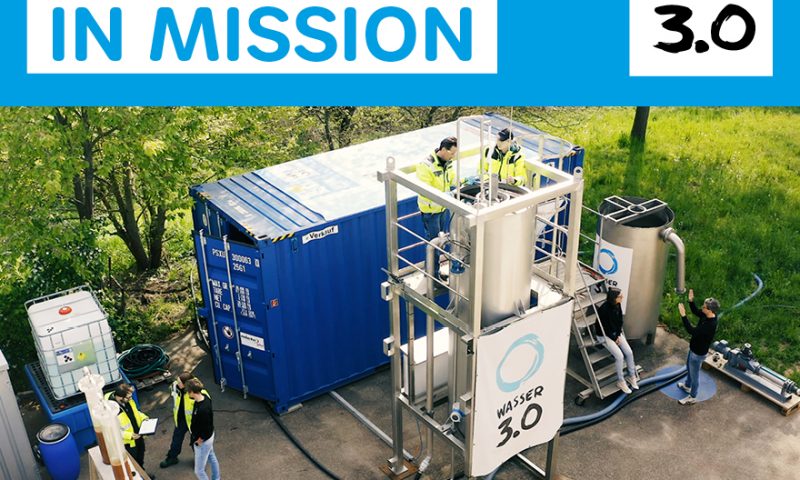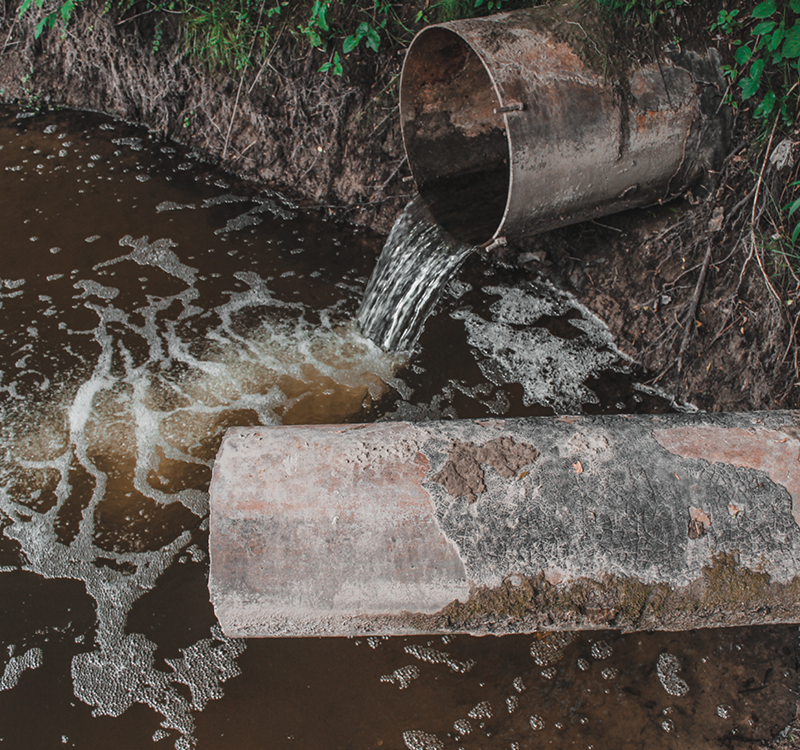
Microplastics and human health
10. November 2022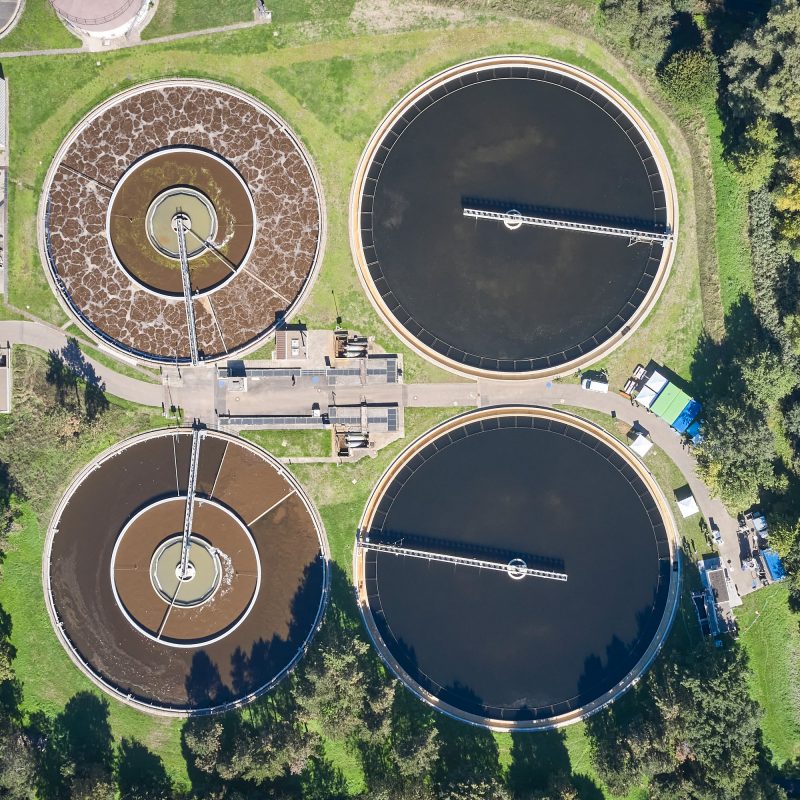
EU Urban Wastewater Treatment Directive
26. January 2023Nordic Water and Wasser 3.0 - Together for water without microplastics and micropollutants
With Nordic Water GmbH from Neuss, we were able to gain a strong cooperation partner for our pilot project at the Landau-Mörlheim sewage treatment plant, who supported us with technical components.

The company has been working for more efficient water purification since 1962 and is now a world-renowned company in the environmental technology market. The group, which has been part of the globally active Sulzer AG from Switzerland since 2021, specialises in the planning, construction and service of water and wastewater treatment plants in both the municipal and industrial sectors. Find out what our understanding of partnership looks like in the current blog.
We need solutions
For the reduction of micropollutants in wastewater, source-oriented and downstream measures are available, among others, each with their specific advantages and disadvantages. In the industrial environment, there are extensive possibilities to reduce the pollutant load already at the point of origin and to upgrade process wastewater. The goal is not only to increase the efficiency of the plants, but also to improve the water quality and even to return purified water to the industrial water cycle.
In the field of municipal wastewater treatment plants, the focus is currently on processes for removing micropollutants. If one considers not only the complexity of dissolved micropollutant loads, but also finely distributed particulate plastic particles (microplastics), no combined processes are currently planned for the expansion of wastewater treatment plants.
Especially in the case of microplastics, new processes offer great opportunities for users, but also with regard to other pollutant classes, innovative strategies as well as the topic of sustainability or so-called sustainable process design are coming into focus.
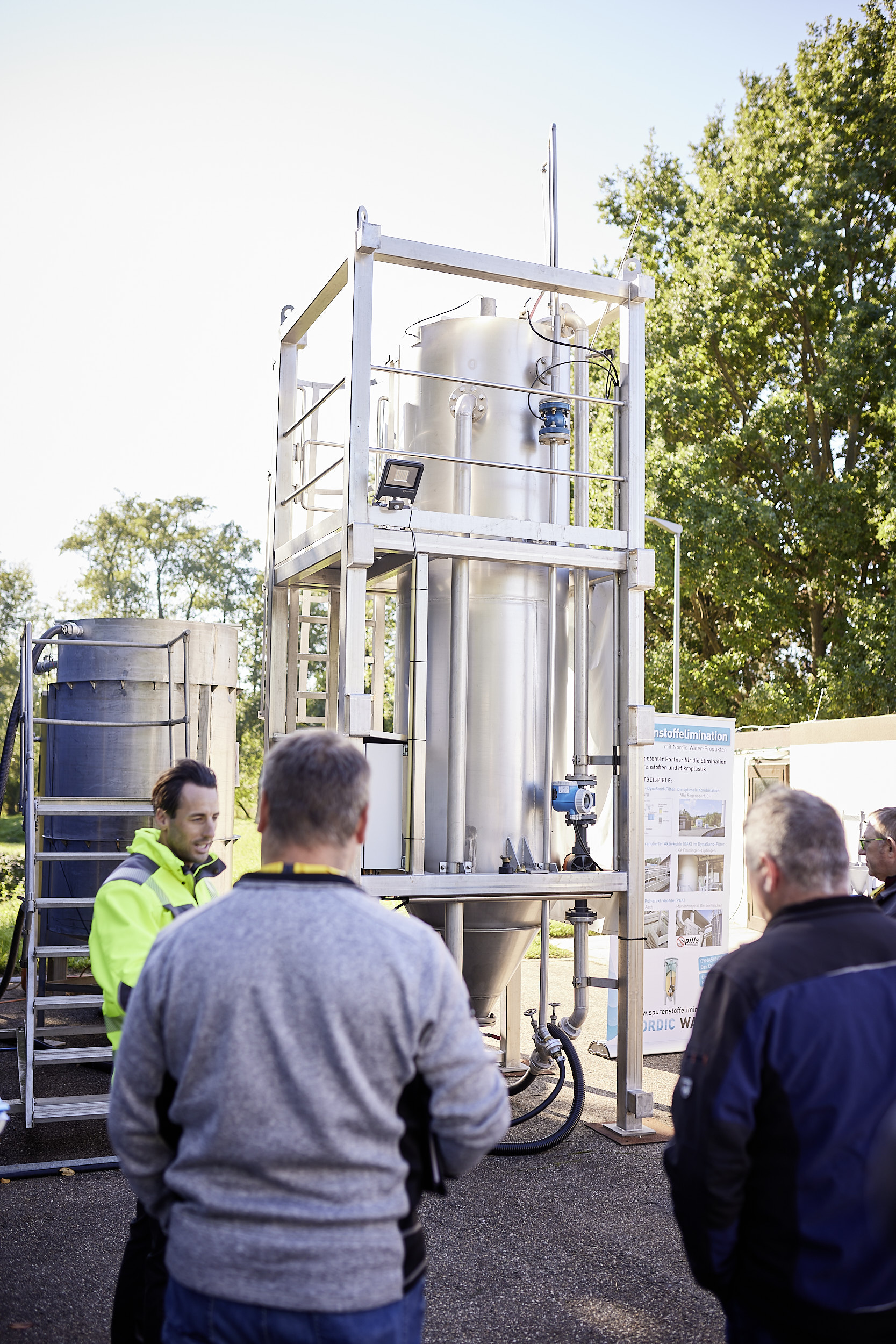
View of the Nordic Water pilot plant in Landau (Copyright Wasser 3.0)
Nordic Water and Wasser 3.0: Common cause for water without microplastics and micropollutants
The reduction of micropollutants in water bodies is extremely important because of their negative effects, but it must not be at the expense of climate protection. Thus the discharge of pollutants into the environment should be prevented as far as possible at the source. However, since many substances, such as pharmaceuticals or household chemicals, also end up in the environment after their intended use, and avoidance measures such as application restrictions or bans via substance or product laws and reduction of emissions are usually not sufficient, end-of-pipe measures at many wastewater treatment plants will become necessary in the future.
Promising success here is a downstream wastewater treatment technology or a more targeted prevention strategy at the point of entry of micropollutants for certain wastewater treatment plants. Based on definitions commonly used in water management, the options for action to reduce and prevent the discharge of micropollutants into water bodies refer to substances that occur in very low concentrations in our water bodies.
Relevant trace substances are substances that, in very low concentrations, have adverse effects on aquatic ecosystems and/or can negatively influence the extraction of drinking water. Interactions between different trace substances (= micropollutants) must also be taken into account.
SDG17: Partnerships to achieve the UN Sustainable Development Goals (SDGs)
Clean water is still not a given; this natural resource has long been limited and clean water is becoming increasingly scarce worldwide. This makes strong partnerships indispensable if you have your sights firmly set on the future of clean water.
Just as we at Wasser 3.0 do everything we can for water without microplastics and micropollutants, the people acting at Nordic Water are also passionate about their vision to make clean water possible for everyone, with the help of their products and technical solutions. Our innovative green tech solution combined with Nordic Water's technical products form a true partnership in mission to make clean water possible for everyone, worldwide.
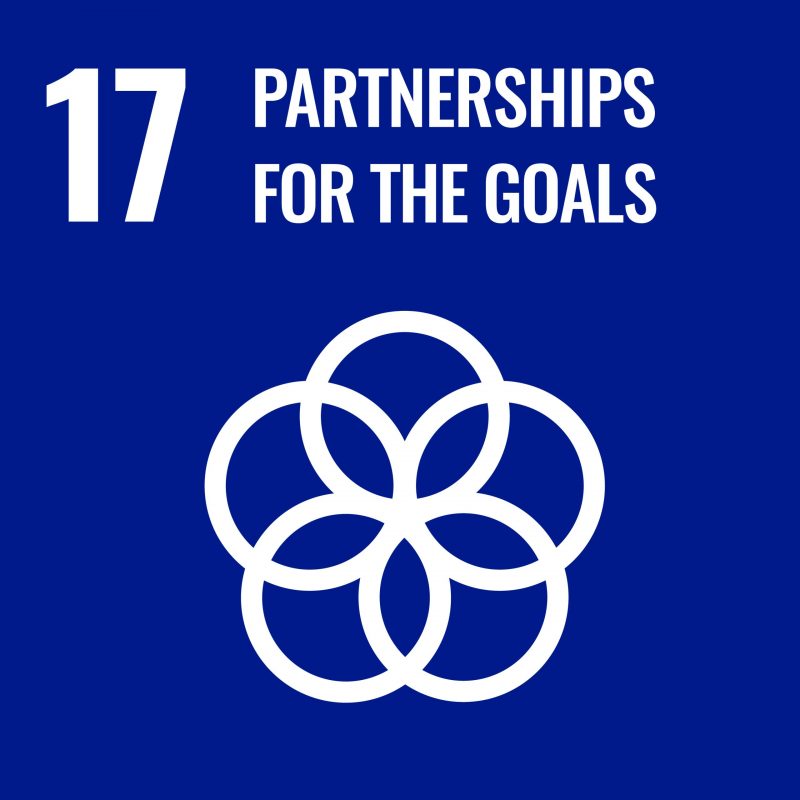
Great enthusiasm for ingenious ideas and technical solutions
Further modular-adaptive wastewater treatment for trace substance reduction in municipal wastewater treatment plants, which can be scaled and adapted, allows for improved reduction of a large number of substances (broadband effect). Furthermore, depending on the process, additional synergies can be achieved with other purification requirements (e.g. further phosphorus elimination, improvement of the hygienic effluent quality of the wastewater). To ensure high efficiency, cost-benefit or cost-effectiveness analyses are useful, also in comparison with other feasible measures (e.g. pre-treatment for indirect dischargers, overflows, etc.). The elimination potential of the wastewater treatment plant and the associated effect on the water body are used to assess effectiveness.
Innovations in water management - Agenda 2030 and 2050
Innovative approaches can be found, for example, in the downstream fourth treatment stage in municipal wastewater treatment plants of size class 4 and 5 or in smaller wastewater treatment plants that discharge into sensitive water bodies. These include combinations of GAC processes, such as those offered by Nordic Water, Advanced Oxidation Processes, such as those supplied by Van Remmen UV Technology for the project. Together with our technology-independent, material science approaches, it is possible to build modular adaptable components and custom solutions into existing technology or provide them as add-on units.
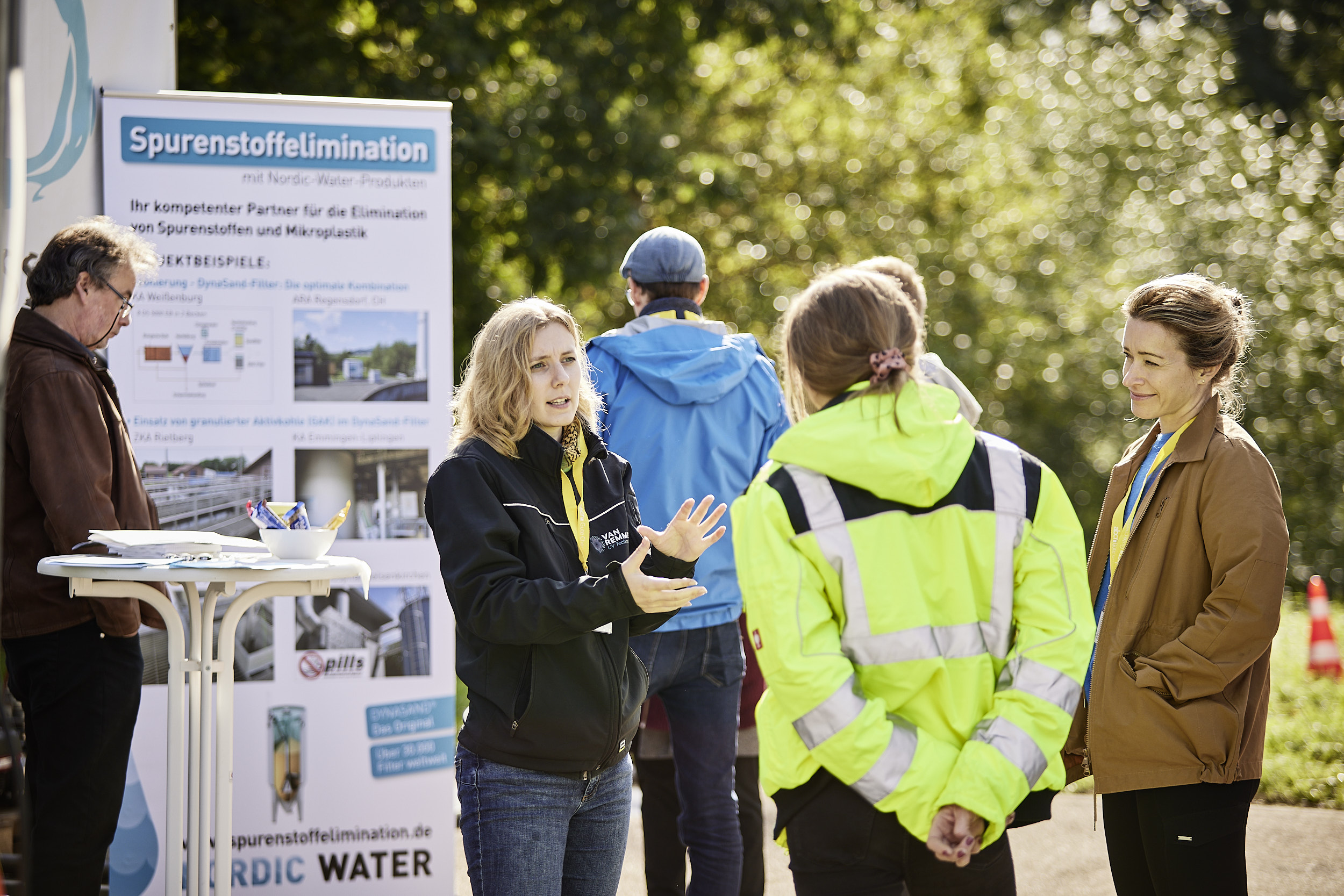
The Open House provided the perfect framework for exchange, discussion and project kick-offs (Copyright Wasser 3.0)
Modularity as a key performance indicator
Compared to large-scale construction measures, modular and scalable pilot plants come into focus, because with the possibility to work practically and adaptively, the potentials for economic, efficient, and adaptable wastewater treatment can be applied in a targeted manner.
Downscaling to address the issues of small wastewater treatment plants was also a topic, because these wastewater treatment plants require technologies that are easy to implement and affordable (especially size classes 2 and 3). The continuous improvement of the detection of micropollutants and microplastics and flexible options for action derived from a modular adaptive process is also important. Here, entirely new possibilities arise to react directly to diverse pollution scenarios and to control processes in a precise and targeted manner using variable material-process combinations.
Taking a broader view creates ecological and social added value
The fact that a large company is joining our research project to help gain more and more understanding of the general pollution situation of our waters and especially our wastewater is a truly wonderful story, which also generated a lot of interest at our Open House in September 2022.
Sonja Winandi provided information on site about what a DynaSand Carbon Filter can do. In the course of this, she said: "To meet the challenges of the future, we are committed to research and development of sustainable and responsible solutions for water and wastewater treatment. Participating in the research project "Water without microplastics and micropollutants" with the DynaSand Carbon Filter has been an exciting and great journey. Collaborative projects like this show that the high demand to maintain and improve the quality of the world's lakes, seas and rivers can best be achieved through cooperative work."
And last but not least, we say thank you!
Many thanks especially to Sonja Winandi and Hansjörg Lenz from Nordic Water who share our enthusiasm and have been a great support for water without microplastics and micropollutants over nine months.

